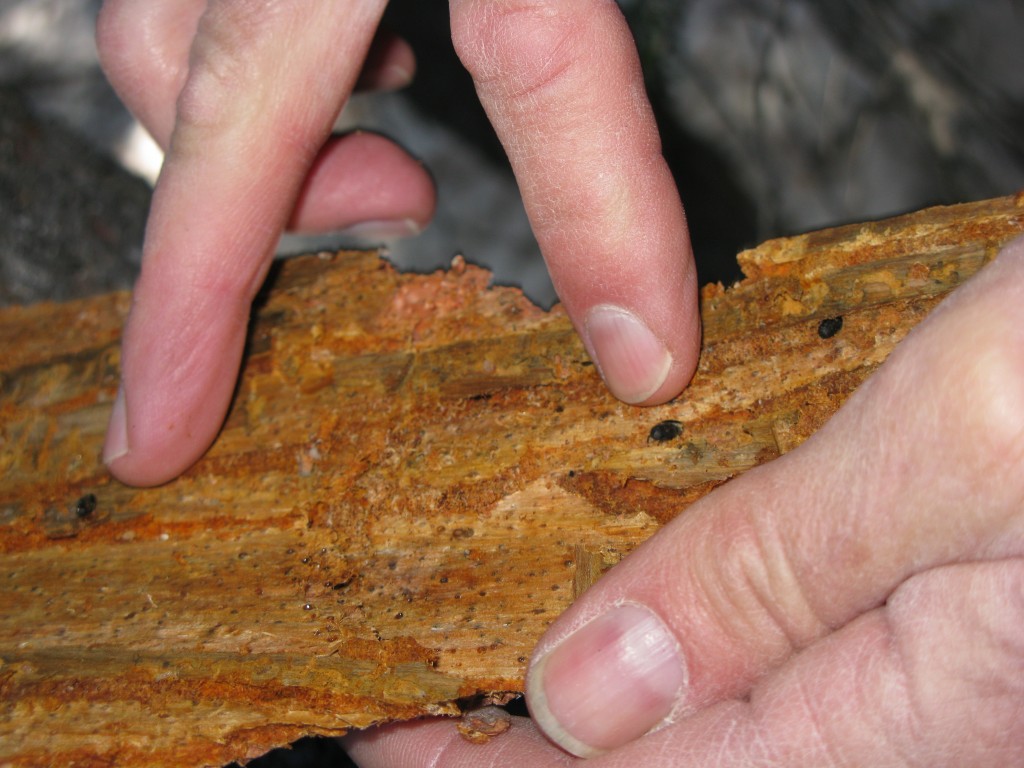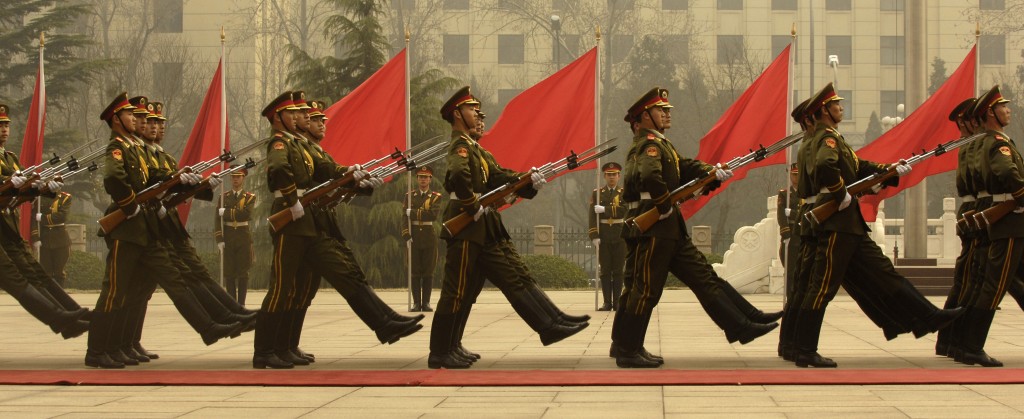 In the continuing quest to find meaning in life, or if not meaning, at least a few good rules, I turn as usual to science. Science offers the phrase, “running open loop.” Open loop is an engineering term meaning a system that runs without feedback, without a self-governor, without correcting itself. A closed-loop sprinkler system has a ground-water sensor to tell it when to stop watering the lawn. An open loop sprinkler keeps sprinkling while the lawn washes down the hill. With this particular metaphor, however, science is not much help. Continue reading
In the continuing quest to find meaning in life, or if not meaning, at least a few good rules, I turn as usual to science. Science offers the phrase, “running open loop.” Open loop is an engineering term meaning a system that runs without feedback, without a self-governor, without correcting itself. A closed-loop sprinkler system has a ground-water sensor to tell it when to stop watering the lawn. An open loop sprinkler keeps sprinkling while the lawn washes down the hill. With this particular metaphor, however, science is not much help. Continue reading

On a cold, clear June morning high in Wyoming’s Wind River Mountains, Jesse Logan stopped on a snow-covered hillside and pointed with his ski pole to a large pine tree. A few of its needles were turning red, a sign of trouble. About a dozen people gathered around him on the snow to listen.
“We got a live one?” a man asked hopefully, pointing out the green needles at the top of a tree with a foot-wide trunk.
“It’s dead and gone, John,” Logan, a trim man with narrow, dark brown eyes, a neat gray goatee, and the self-contained manner of a traditional rural westerner, replied. “It ain’t gonna be green long.”
Until he retired in 2006, Logan ran the beetle research unit for the U.S. Forest Service’s Rocky Mountain Laboratory in Utah. For thirty years, Logan had investigated the relationship between trees and pest insects that plague them, combining sophisticated mathematical modeling of insect – plant warfare and boots-on-the-snow field observations.

On this morning, he was teaching a group of amateur wilderness enthusiasts and conservationists how to size up the health of a long-lived conifer called the whitebark pine, as part of an effort to scientifically assess the health of the tree’s namesake ecosystem. Whitebark pines, which can grow up to sixty feet tall and have whitish trunks, anchor the high-altitude forest of the Rocky Mountains and the Cascades, growing in cold, windswept locations too harsh for other evergreens. Whitebark pine provides essential support to this ecosystem, which is located just below the timberline, creating soil where there was rock, shade where there was sun, and cover for wildlife where there was none. The deep green carpet of whitebark pine that covers the West’s high country is so important it’s been called the “rooftop of the Rockies.”
Today, however, the whitebark pine is in trouble, and the rooftop of the Rockies is crumbling.
Continue reading
Last week, officials said that DNA from multiple family members was used to confirm that its years-long hunt for Osama bin Laden had ended in success.
But even as politicians criticized President Obama’s decision not to release photos of the dead bin Laden, nobody questioned the assertion that, thanks to DNA, US officials are “99.9” percent certain that the man they shot and killed in a compound in Abbottabad, Pakistan, was the long-sought al Qaeda leader.
Instead, Republicans and Democrats alike hailed the DNA evidence as “conclusive,” proving “beyond the shadow of a doubt” that the dead man was bin Laden, and the public took them at their word.

On April 22, Jason Stephany, a researcher in a yeast lab, received an email from his co-worker, a woman whose husband has a fast-growing blood cancer called acute lymphoblastic leukemia (ALL). She explained that her husband would need a bone marrow transplant. In patients with ALL, the bone marrow produces hordes of immature white blood cells that crowd out normal cells. Many drugs exist to fight the disease, but the only cure is to replace the cancerous marrow with healthy marrow from a donor. Stephany and his co-workers were unlikely to be a match for the woman’s husband, but she encouraged them to join the national bone marrow registry anyway. “You will be a hero for saving a life somewhere in the world and maybe this will help people to be more involved,” she wrote. Stephany thought it sounded like a good idea. But when he visited the registry’s web page, he found he was ineligible. Stephany is gay. Continue reading
 Something is curiously missing in most Old Master paintings of David and Goliath. The famous story from the Old Testament focuses on David’s feat of killing a nine-foot-tall warrior kitted out in mail armor with just one, perfectly aimed slingshot.
Something is curiously missing in most Old Master paintings of David and Goliath. The famous story from the Old Testament focuses on David’s feat of killing a nine-foot-tall warrior kitted out in mail armor with just one, perfectly aimed slingshot.
Yet when 16th and 17th century artists went to paint this story of the biblical underdog, they seldom bothered to portray the weapon system that took down Goliath. (Or if they did, they snuck it onto the canvas unobtrusively, as Tanzio da Varallo did in his 17th century portrait of David above.)
For the most part, however, these painters preferred to depict David wielding a shiny sword, just after he had beheaded his opponent. Why is that? Continue reading
It’s not every day that a flight is delayed because there are too few people on board. But, blame Will and Kate, Brits just weren’t flying out of London last Friday. As a result, the Virgin Atlantic A340-600 called Ladybird was carrying only 112 of her usual 380 passengers.
So before we could take off, we had to play a little game of musical chairs. This was done to balance out the plane. Rows 37-40 were blocked off so no one could sit in them. A lady from a middle section was asked to move next to me over on the right side of the plane, and similar reconfigurations took place all over economy. (A flight attendant confirmed my suspicion that no Upper Class passengers were made to move from their pods.) Everyone was free to prowl around the cabin and claim the empty rows once we reached cruising altitude, but the seat distribution had to be exact for takeoff and landing.
How would you describe the Minute Waltz, by 19th-Century composer Frédéric François Chopin?
Lighthearted and whimsical? Dainty, delicate, fragile?
In some classical music circles, Chopin’s work has a sissy reputation. As a Washington Post critic wrote last year, “Chopin’s music has sometimes been branded effeminate, or ‘salon music’: not quite serious, not quite healthy.” Chopin the man is also known for a certain lack of virility. The American composer Charles Ives once wrote, rather viciously, of Chopin: “One just naturally thinks of him with a skirt on, but one which he made himself.”
Part of Chopin’s feeble image comes from the fact that he was always sick. As a teenager, he suffered long bouts of respiratory illness, with swollen glands and dramatic weight loss. For the rest of his life, he dealt with frequent episodes of bronchitis and laryngitis. He never developed facial hair. He was extremely weak: after long piano performances he had to be carried to bed.
When Chopin died, at just 39 years old, his death certificate blamed tuberculosis, a common bacterial infection. But, as described in a review published last month, some medical experts are skeptical of that diagnosis.
Continue reading
 A year on and many thousands of leaked documents later, it’s easy to forget how Wikileaks first came to wide international attention. But a recent paper in Psychological Science brought the memory back to me with a sharpness and intensity out of all proportion with the grainy YouTube video at the incident’s core. The memory is unpleasant enough that I’m not even going to think about sharing it until after the jump.
A year on and many thousands of leaked documents later, it’s easy to forget how Wikileaks first came to wide international attention. But a recent paper in Psychological Science brought the memory back to me with a sharpness and intensity out of all proportion with the grainy YouTube video at the incident’s core. The memory is unpleasant enough that I’m not even going to think about sharing it until after the jump.
Human beings are weird animals. You knew that of course—our constant self-evaluation, whether bemused or infatuated, is a key contributor to that weirdness—but I’m talking about something deeper than the whole hairless bipedalism situation. From a biological point of view, we have a profound contradiction running right through the psychological essence of our species.

